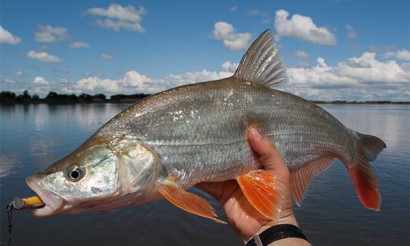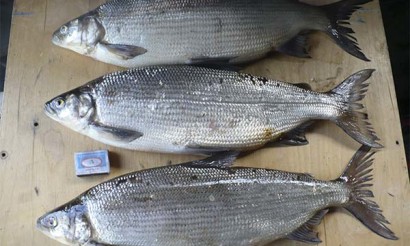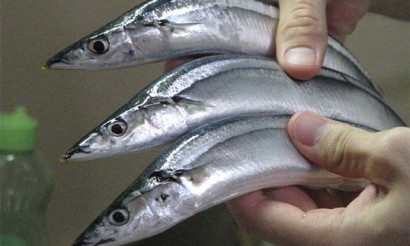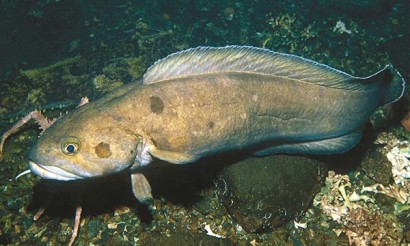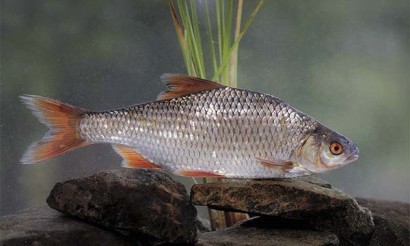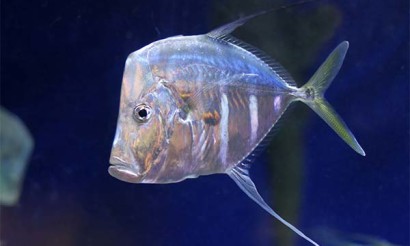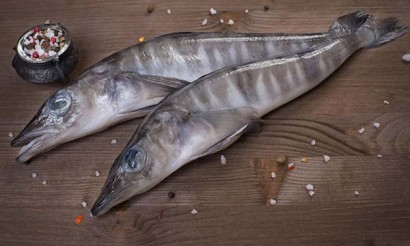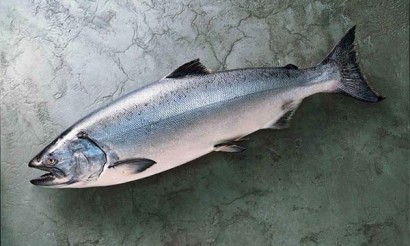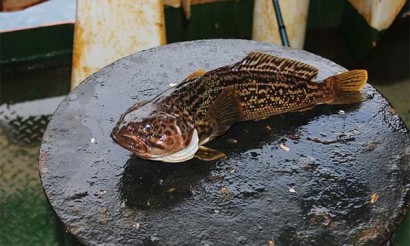Pollack fish: photo, description, useful properties and recipes
About the varieties of fish and their properties we know more from store shelves or restaurant menus than from the study of wildlife. Figuratively, let's delve deeper into the underwater world and consider the paulaca.
- Polaka: what kind of fish they are, what they look like, and where they live
- What it looks like
- Where does it live
- What it eats
- Composition and calories
- What is polack fish good for?
- Harms and contraindications
- Where to buy and how much costs
- How to cook delicious silver saithe: recipes
- Polaka in the oven with vegetables
- Polak baked in pita bread in the oven
- Pan fried polaka
- Q&A
- What does a silver saithe taste like?
- Fatty or not?
- Are there many bones in the fish?
Polaka: what kind of fish is it, what it looks like, and where does it live?
Polaka is a fish of the cod family, and its relatives include silver saithe and lur.
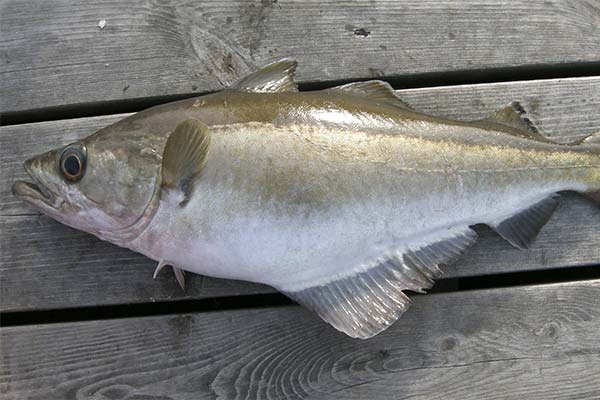
The lur and saithe differ in appearance by minor features: for example, the first representative of the aquatic world, the lower jaw protrudes forward, in contrast to the saithe, in which the jaws are connected in one line. There are slight differences in the coloration of the species as well.
What it looks like
The body of the polaka is elongated, the head is pointed, and the transition of the torso in the tail is refined, making the fish graceful in appearance. The coloration is irregular, with the head dark gray on the back and silvery underneath. The back is olive-colored, smoothly transitioning to golden with reddish flecks on the sides. The abdominal area is silvery. The fins are light red, and the tail is bifurcated in the shape of the Latin letter V.
The family grows a little over 70 cm, but there are specimens over a meter long, weighing on average 7-8 kg.
Where does it live
Pollack lives in large flocks in the cold waters of Norway, in the northeastern Atlantic, in the North and western Mediterranean Sea. In the warm season, prefer a depth of 20-30 m, in winter descend to the 40-50 m.
On spawning migrate to a depth of 100 to 150 m at a water temperature of 6-8 degrees.
The eggs are kept in free drift, and one week later the fry emerge. For the first three years they develop near the coast, gradually organizing themselves into a new flock. The fish lives about 8 years, but some long-lived members of this family live up to 25.
What does it eat?
Fish of this species are predators, and it gives out their large jaws. The diet consists of herring, sandfish, and shrimp. Pollack fry feed on drifting plankton and the eggs of other fish.
In pursuit of prey, the flock travels enormous distances.
Composition and calories
Fillet composition:
- Protein - 15.9 g.
- Fats - 0.6 g.
- Carbohydrates - none.
- Dietary fiber - none.
- Water - 82 g.
Calories: per 100 gr. 70 kcal.
How is polack fish useful?
The usefulness of polefish lies in the large list of vitamins and minerals it contains. They are necessary for good health.
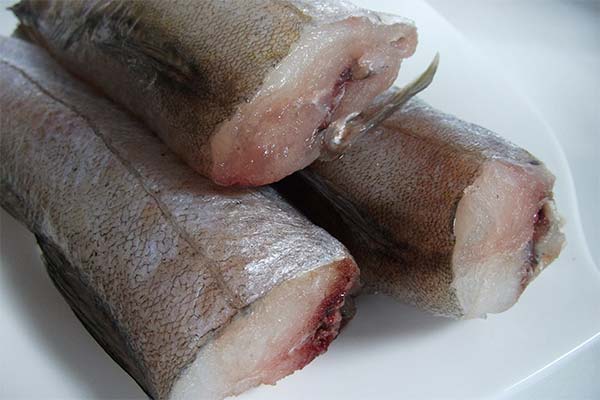
- Omega-acids, Omega-3 and Omega-6 - keep the body in good shape and are necessary for the activity of the brain.
- Vitamin A helps restore vision.
- Vitamin B6 works to strengthen the immune system, has a positive effect on nervous system processes, provides the conversion of amino acids, helps the formation of red blood cells, supports a balanced blood composition. The consequence of vitamin B6 deficiency is loss of appetite, skin disorders, development of anemia.
- Vitamin B12 is important for metabolism and participates in hematopoiesis. Consequence of vitamin B12 deficiency - development of anemia, leukopenia, thrombocytopenia.
- Choline has a beneficial effect on liver function.
- Iodine and selenium are necessary for the thyroid gland and hormonal system.
- Potassium is involved in conducting nerve impulses.
- Phosphorus, magnesium, and calcium are necessary for the mineralization of bones and teeth. Deficiency of these minerals leads to anemia, anorexia, and rickets.
- Zinc promotes the resorption of neoplasms and is involved in the production of testosterone.
Polaka, as a food product, is valuable for the human body. This fish can be safely introduced into the diet. Because of the lack of carbohydrates, it can be used in diet diets. Given the large amount of protein in the fillet, it is useful for athletes to build muscle mass.
Harms and contraindications
Polaka food is recommended with caution for people with an allergic reaction to seafood, pregnant and lactating mothers and children.
Where to buy and how much costs
On sale in stores, this fish is found frozen. In restaurants, it is offered in a variety of dishes.
Frozen carcasses can be bought in online stores. The average price per kilogram - from 250 p.
How to cook silver saithe deliciously: recipes
The first condition for frozen fish is proper defrosting. To do this, it is recommended to leave the frozen fish on the bottom shelf of the refrigerator. Gradual defrosting will preserve the structure of the meat, will not allow the moisture to separate, the fish will remain juicy and tasty. Cook it in different ways in the oven and in a pan.
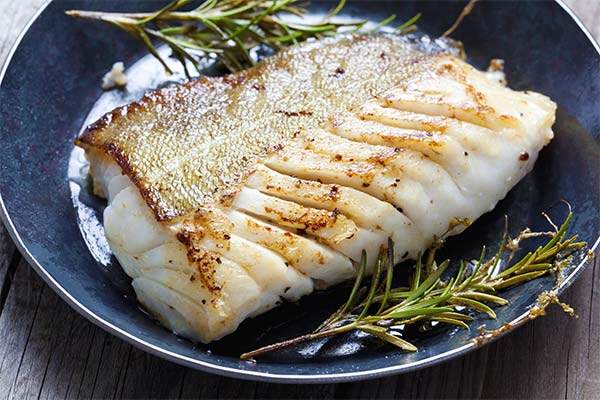
Polaka in the oven with vegetables
Ingredients for 4 servings:
- Polaka - 600 g.
- Potatoes - 150 г.
- Onions - 100 gr.
- Mexican mix - 250 g (or 1 bag).
- Cauliflower - 200 г.
- Bell pepper - 60 г.
- Vegetable oil - 1 tbsp.
- Salt.
- seasonings.
Recipe:
- Peeled potatoes cut in half rings, put on the bottom of the form, salt and pepper. The next layer put the onion, cut into rings.
- Pre-thawed, peeled and washed fish cut in portions, salt, brush with vegetable oil and place in the form as the next layer.
- Next, pour the Mexican vegetable mixture, add lightly boiled cauliflower and chopped red bell pepper. Season with salt and add your favorite seasonings to taste.
- Pour a glass of water, cover with foil and put in a preheated oven for 40 minutes. Baking temperature 200 ° C.
Polaka in pita bread, baked in the oven
- Main ingredients:
- Polaka - 600 g.
- Lavash - 1 unit.
Ingredients for the sauce:
- Onion - 1 pc.
- Carrots - 1 pc.
- Parsley - 1 bunch.
- Mustard (cooked) - 1 tsp.
- Mustard (seed) - 1 tsp.
- Eggs - 2 pcs.
- Salt to taste.
Ingredients for the spread:
- Sour cream - 100 g.
- Cheese - 70 gr.
How to prepare the sauce:
- Chop the onion, parsley, grate the carrot on a coarse grater, add mustard cooked and in grains, eggs, mix everything well.
- Cut the tomatoes into thin slices.
Next, you need to cut the poblano, separate along the fillet halves, cut into portions, salt a little.
Main preparation of the dish:
- Cut the pita into squares. Place a circle of tomato in the center, top it with a piece of fish, spoon the sauce on it. Wrap the pita with the filling in an envelope. Prepare all portions of fish in this way and put them in a form.
- To prepare the spread, prepare the lavash. In sour cream add grated through a fine grater hard cheese, mix.
- Coat the envelopes generously with sour cream-cheese mixture and place in the oven for baking for 20-25 minutes at 180°C.
Pan fried polaca
For roasting, thawed and prepared poblaca does not need to be peeled from the bones.
Preparation: Cut the fish into bite-sized pieces. Prepare a mixture of wheat flour and salt, mix well and pour into a cellophane bag. In a bag with flour and salt send portions, shake gently so that the fish is covered on all sides with flour mixture. Next, in hot oil, fry the fish pieces on both sides.
Tip! When frying over high heat, the fish does not have time to separate the moisture, retains its juiciness and is covered with a crispy crust.
Q&A
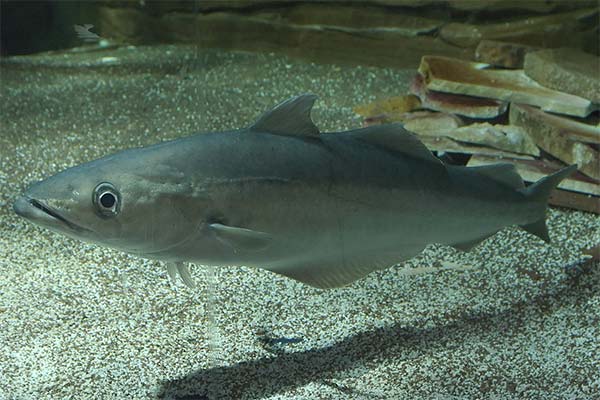
What does a silver polack taste like?
Pollack tastes like cod, but its meat is softer and juicier. The flavor is not pronounced, faint, pleasant.
Fatty or not?
Polaka fish is not greasy. If you cook it without adding oil, you get a diet product. Those who like to eat fish, who are not afraid of gaining weight, add vegetable oil when cooking fish to enhance its flavor.
Are there many bones in fish?
The bones in fish consist of the backbone; there are none in the meat.
«Important: All information on this site is provided for informational purposes only. purposes only. Please consult with a health care professional before following any recommendations. should be consulted with a health care professional before those recommendations are used. Neither the editors nor the authors shall be liable for any possible harm caused by materials."

